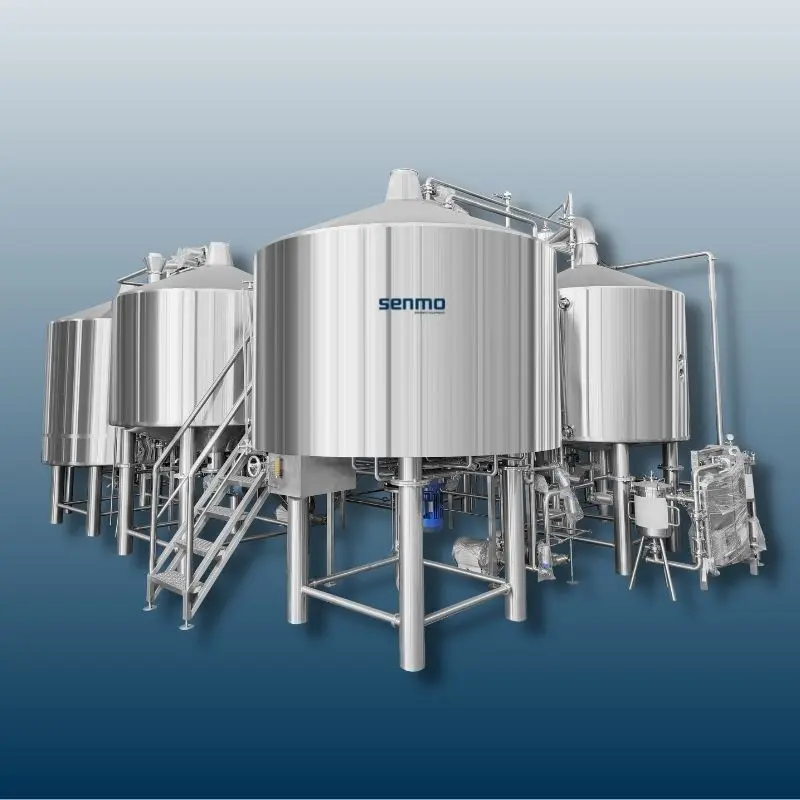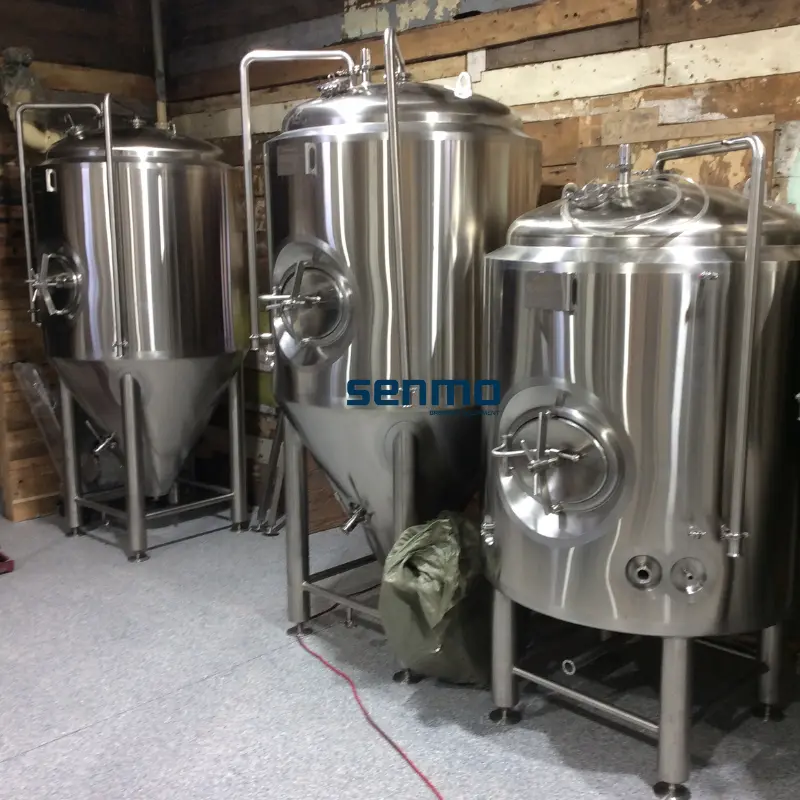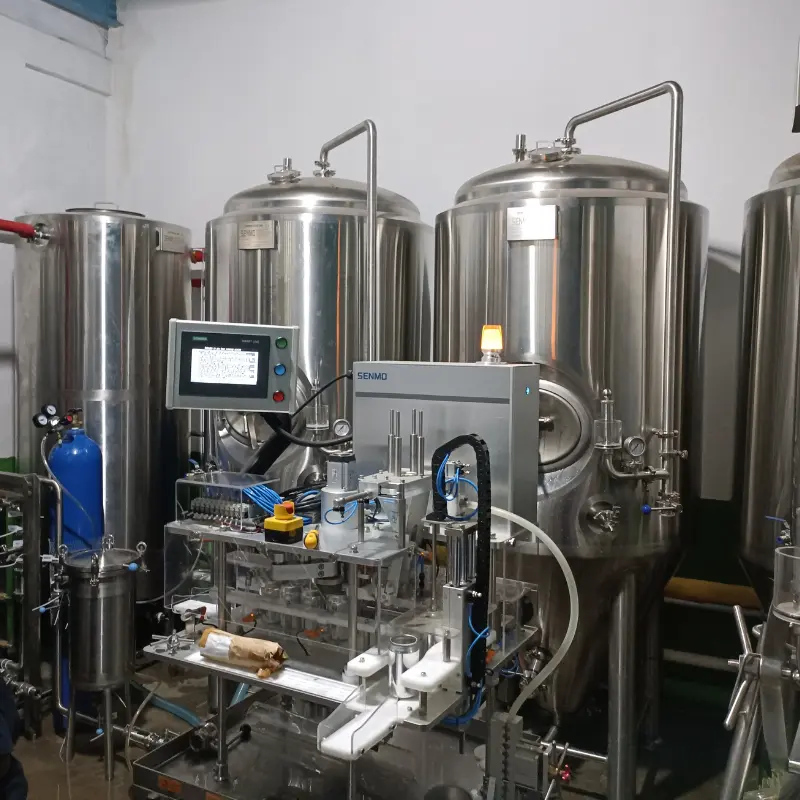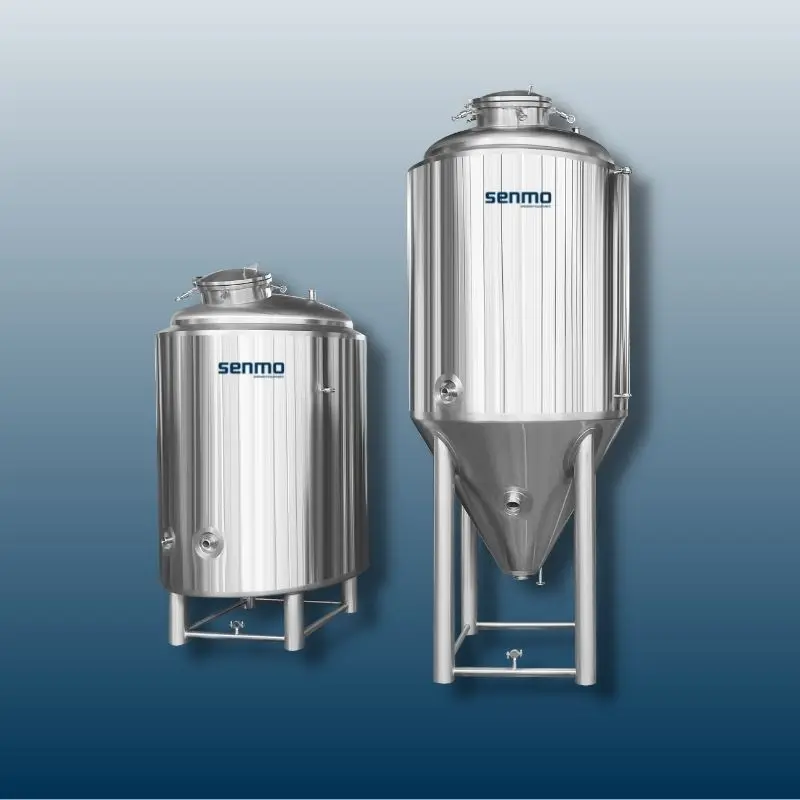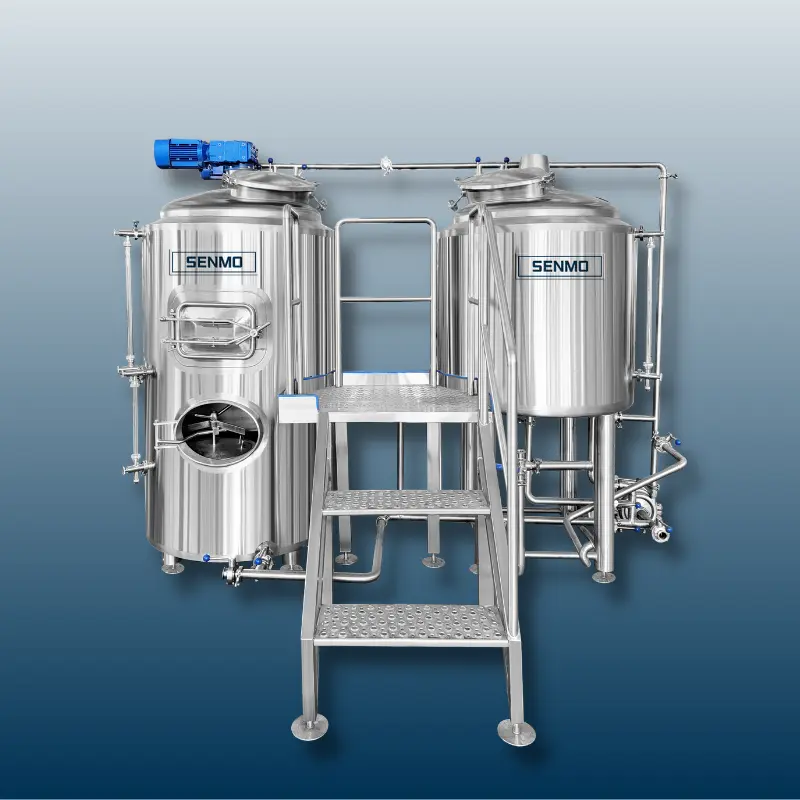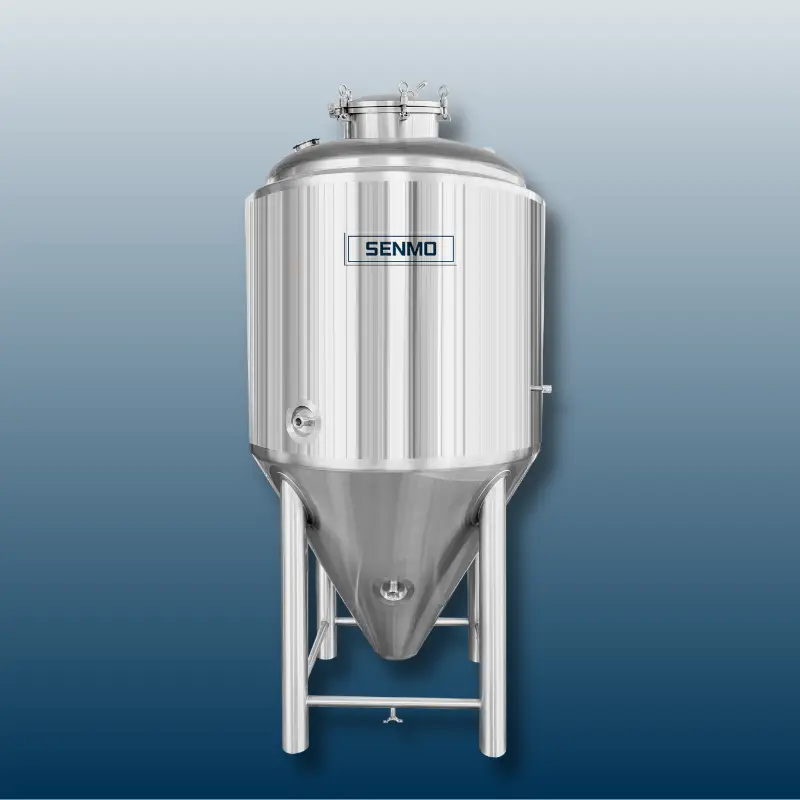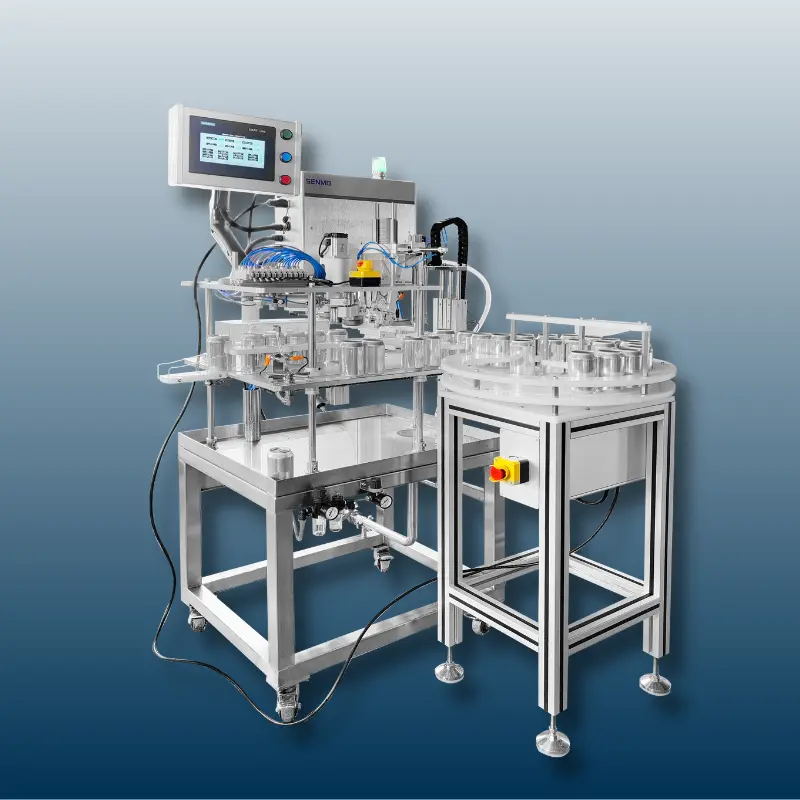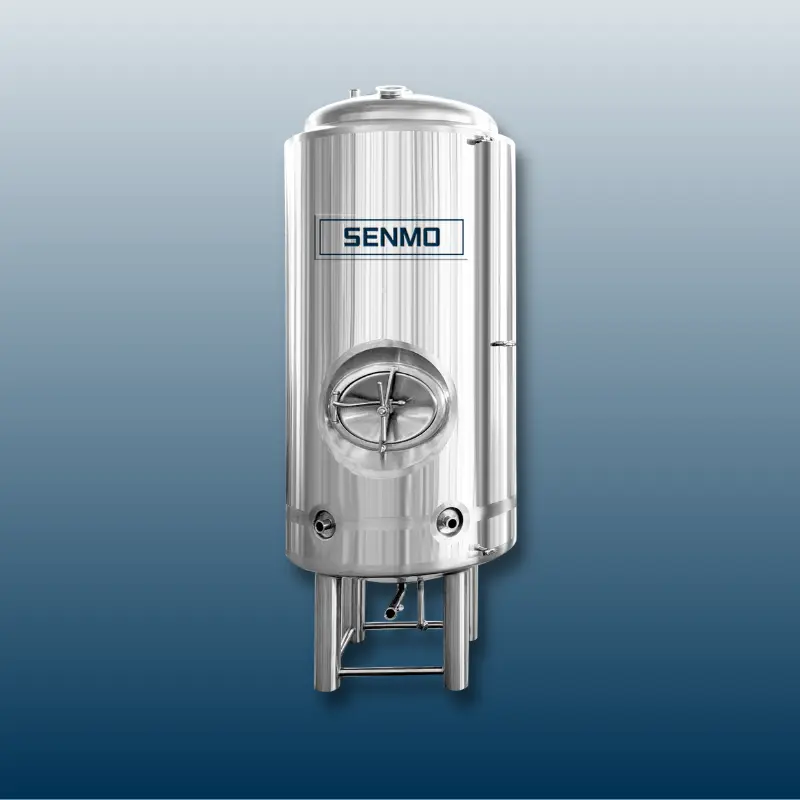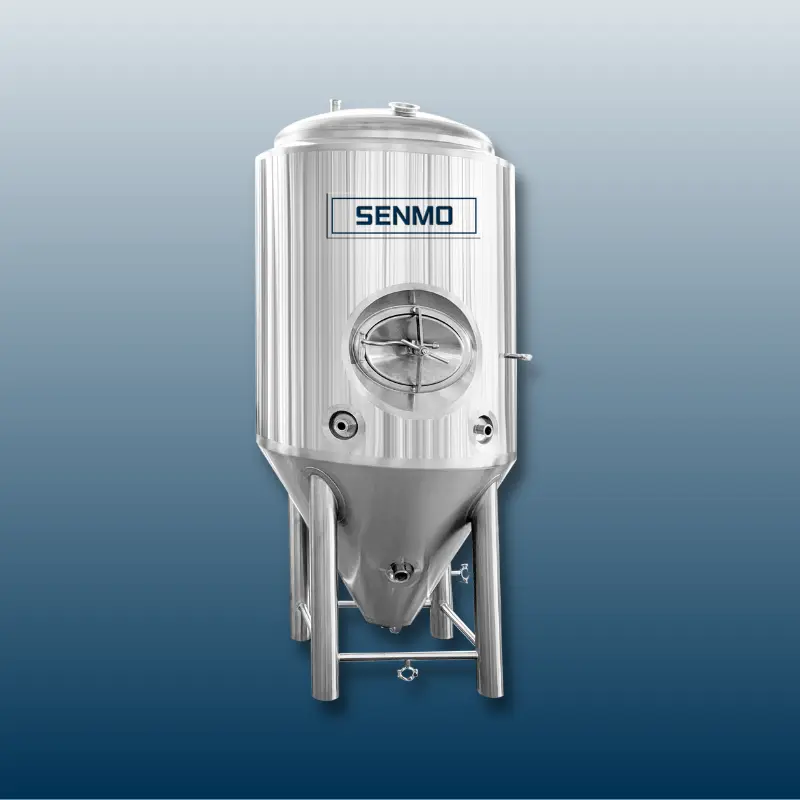Commercial beer production relies on a sophisticated array of equipment to ensure quality, consistency, and efficiency throughout the brewing process. From the initial stages of mashing and lautering to fermentation, conditioning, and packaging, each step requires specialized equipment designed to handle large volumes while maintaining strict quality control standards.
1. Mashing and Lautering
The initial stages of commercial beer production, mashing and lautering, are critical for extracting fermentable sugars from grains and ensuring the clarity and efficiency of the brewing process.
Mashing:
Mashing is the process where crushed grains, typically malted barley, are combined with hot water in a vessel known as a mash tun. The purpose of mashing is to activate enzymes naturally present in the malt, which convert complex starches into simpler sugars that yeast can ferment into alcohol and carbon dioxide.
Equipment: Commercial breweries utilize mash tuns that are often made of stainless steel and equipped with advanced features. These mash tuns include:
Mixing Systems: Agitators or rakes inside the mash tun ensure thorough mixing of the grain and water, promoting enzyme action and even temperature distribution.
Temperature Control: Precise temperature control is crucial during mashing to activate specific enzymes at optimal temperatures. Mash tuns are equipped with heating elements or steam jackets to achieve and maintain temperatures typically ranging from 145°F to 160°F (63°C to 71°C), depending on the desired characteristics of the beer being brewed.
Process: During mashing, the mash undergoes different temperature rests (e.g., protein rest, saccharification rest) to break down proteins and convert starches into fermentable sugars. This enzymatic process typically lasts from 60 to 90 minutes, depending on the beer style and malt composition.
Lautering:
Following mashing, lautering is the process of separating the liquid wort from the spent grain husks and solids.
Equipment: Commercial breweries employ lauter tuns or mash filters for lautering. These vessels are designed to achieve efficient separation of wort from grain while ensuring clarity and maximizing extract yield.
Lauter Tuns: Traditional lauter tuns feature a false bottom or wedge wire screen that acts as a filter bed. The spent grain bed acts as a natural filter, allowing clear wort to flow through while retaining solids.
Mash Filters: Modern breweries may use mash filters, which employ thin filter plates to separate wort from spent grains under high pressure. This method can achieve higher extract yields and shorter lautering times compared to lauter tuns.
Process: During lautering, the mash is slowly rinsed with hot water (sparge water) to extract remaining sugars from the grain bed. This process, known as sparging, ensures maximum efficiency in sugar extraction and clarity in the wort.
Mashing and lautering are fundamental steps in commercial beer production, where the conversion of starches into fermentable sugars and the efficient separation of wort from spent grains are crucial for producing high-quality beer. The use of advanced mash tuns and lautering equipment with precise control systems ensures consistency and efficiency in the brewing process, allowing breweries to achieve the desired flavor profiles and characteristics in their beers.
2. Boiling and Hopping
After the lautering process, the next critical step in commercial beer production is boiling the wort and adding hops. This stage not only sterilizes the wort but also introduces bitterness, flavor, and aroma to the beer.
Boiling:
Boiling the wort serves several essential purposes in commercial brewing:
Sterilization: Boiling the wort ensures that any potential contaminants, such as bacteria and wild yeast, are killed off, preventing off-flavors and spoilage in the final beer.
Evaporation: During boiling, excess water in the wort evaporates, concentrating the sugars and flavors to achieve the desired beer strength (original gravity).
Flavor Development: The boiling process contributes to the development of complex flavors and aromas through Maillard reactions and caramelization of sugars.
Equipment:
Commercial breweries use brew kettles designed to handle large volumes of wort efficiently and precisely control the boiling process:
Material: Brew kettles are typically made of stainless steel due to its durability, ease of cleaning, and resistance to corrosion.
Internal Calandrias: Many modern brew kettles are equipped with internal calandrias or external heating elements, which provide even heat distribution throughout the kettle. This ensures uniform boiling and prevents scorching of the wort.
Temperature Control: Precise temperature control is crucial during boiling to achieve specific flavor profiles and ensure consistency in beer production. Brew kettles are equipped with digital temperature controllers or manual adjustments to maintain the boiling temperature typically around 212°F (100°C).
Whirlpool Systems: Towards the end of boiling, whirlpool systems are used to create a vortex in the kettle, which helps in separating the hot break material (trub) from the clear wort. This step aids in achieving clarity in the final beer and improves the efficiency of transferring wort to fermentation vessels.
Hopping:
Hops are added during the boiling stage to impart bitterness, flavor, and aroma to the beer. The timing and quantity of hops added influence the beer's bitterness (IBUs), flavor complexity, and aromatic profile:
Bittering Hops: Added early in the boil, bittering hops release alpha acids that provide bitterness to balance the sweetness of the malt.
Flavor and Aroma Hops: Added later in the boil or at flameout, flavor and aroma hops contribute aromatic oils and volatile compounds that enhance the beer's aroma and taste.
Boiling and hopping are crucial stages in commercial beer production that contribute significantly to the final beer's flavor, aroma, and quality. The use of advanced brew kettles with precise temperature control, internal calandrias, and whirlpool systems ensures consistent boiling and efficient trub separation, allowing breweries to achieve desired flavor profiles and maintain high standards of beer production. These processes highlight the importance of craftsmanship and attention to detail in creating diverse and flavorful beers that satisfy consumer preferences and uphold brewing traditions.
3. Fermentation and Conditioning
After the boiling and hopping process, the wort undergoes fermentation and conditioning, crucial stages where yeast transforms sugars into alcohol and flavors develop.
Fermentation:
Fermentation is the process where yeast converts fermentable sugars in the wort into alcohol and carbon dioxide. This stage typically occurs in specialized vessels known as fermentation tanks or fermenters.
Equipment:
Commercial breweries commonly use cylindrical-conical tanks (CCTs) made of stainless steel for fermentation. These tanks offer several advantages:
Design: CCTs have a cylindrical base with a conical top, facilitating both primary fermentation and conditioning in the same vessel. The conical shape allows yeast and other sediments to settle at the bottom (cone), making it easier to harvest yeast or clarify beer without transferring to another vessel.
Material: Stainless steel is preferred for CCT construction due to its durability, ease of cleaning, and resistance to contamination.
Features:
Temperature Control Jackets: CCTs are equipped with cooling jackets or heating elements to maintain precise fermentation temperatures, typically between 50°F to 75°F (10°C to 24°C), depending on the yeast strain and beer style. Stable temperatures promote consistent fermentation and minimize off-flavors.
Pressure Relief Valves: During fermentation, yeast produces carbon dioxide, which creates internal pressure within the tank. Pressure relief valves ensure safety by releasing excess gas while maintaining a controlled environment inside the fermenter.
Sanitary Fittings: CCTs are fitted with sanitary valves, fittings, and sampling ports to facilitate yeast pitching, monitoring fermentation progress, and transferring beer to conditioning or packaging.
Conditioning:
Following primary fermentation, some beers undergo conditioning to enhance flavor and clarity before packaging. Conditioning can occur in the same CCT or be transferred to separate conditioning tanks or maturation vessels.
Purpose: Conditioning allows flavors to meld and mature, ensuring a smooth, balanced beer. It also facilitates the precipitation of yeast and other solids, improving beer clarity and stability.
Process: Conditioning conditions vary based on beer style and brewer preference. Some beers undergo extended cold conditioning (lagering) to develop clean flavors and smooth textures.
Fermentation and conditioning are critical stages in commercial beer production that influence the beer's flavor, aroma, and overall quality. The use of cylindrical-conical tanks (CCTs) equipped with temperature control, pressure relief, and sanitary features ensures optimal fermentation conditions and yeast health. These vessels allow breweries to produce consistent and high-quality beers that meet consumer expectations while maintaining efficiency and adhering to brewing traditions. By carefully managing fermentation and conditioning processes, commercial breweries can create a diverse range of flavorful beers that reflect their craftsmanship and dedication to brewing excellence.
4. Filtration and Packaging
Once fermentation and conditioning are complete, commercial breweries undertake filtration and packaging processes to ensure the clarity, stability, and quality of their beer products.
Filtration:
Filtration is a crucial step where the beer undergoes clarification to remove yeast, proteins, hop particles, and other solids that can affect its appearance and shelf stability.
Types of Filtration Equipment:
Commercial breweries utilize various filtration methods depending on production volume, beer style, and desired clarity:
Plate and Frame Filters: These filters consist of plates and frames with filter media (e.g., cellulose sheets or filter pads) between them. Beer passes through the filter media, trapping particles and solids. Plate and frame filters are versatile and suitable for smaller to medium-sized breweries.
Diatomaceous Earth (DE) Filters: DE filters use a fine, porous material made from fossilized remains of diatoms. The beer is passed through a DE filter, which captures finer particles and provides excellent clarity. DE filtration is effective for larger breweries producing high volumes of beer.
Crossflow Filters: Crossflow filtration uses membranes to separate particles from the beer. Unlike traditional filters, crossflow filters operate by passing beer alongside the membrane surface, reducing clogging and minimizing beer loss. This method is efficient for large-scale breweries.
Process: Filtration is typically conducted at cold temperatures to facilitate particle precipitation and minimize beer loss. The clarified beer is collected in a bright beer tank, ready for carbonation and packaging.
Packaging:
Packaging involves carbonating the beer to the desired level of carbonation and filling it into containers for distribution and consumption.
Carbonation: Carbonation adds carbon dioxide to the beer, enhancing its mouthfeel and preserving freshness. Carbonation levels vary depending on beer style and consumer preferences.
Packaging Equipment:
Bottling Lines: Bottling lines are equipped with automatic fillers, cappers, and labelers to efficiently fill and seal bottles. Modern bottling lines can handle high production volumes while maintaining product integrity and consistency.
Kegging Systems: Kegging systems fill stainless steel kegs with beer, which are then pressurized and sealed. Kegging is preferred for draft beer distribution to bars, restaurants, and taprooms.
Quality Control: Throughout packaging, breweries employ quality control measures to monitor fill levels, oxygen levels, and microbial contamination. Automated systems and in-line sensors ensure that each packaged product meets quality standards.
Filtration and packaging are final stages in commercial beer production that ensure clarity, stability, and quality consistency. The use of advanced filtration equipment such as plate and frame filters, DE filters, or crossflow filters allows breweries to achieve desired beer clarity while minimizing beer loss. Efficient packaging systems with automatic fillers and quality control measures ensure that each bottle or keg maintains product integrity and meets consumer expectations. By investing in robust filtration and packaging processes, commercial breweries uphold brewing standards and deliver high-quality beers that satisfy diverse consumer preferences worldwide.
5. Quality Control and Automation
Quality control and automation are integral components of commercial brewing operations, ensuring consistency, efficiency, and high standards throughout the entire beer production process.
Role of Quality Control:
Quality control (QC) in brewing involves systematic checks and monitoring of raw materials, production processes, and finished products to maintain desired quality attributes and meet consumer expectations.
Key Parameters Monitored:
pH Levels: pH measurement is crucial throughout brewing to optimize enzymatic activity during mashing, control fermentation conditions, and assess beer stability.
Gravity: Gravity readings measure sugar content in the wort and monitor fermentation progress. This helps determine when fermentation is complete and ensures consistent alcohol content in the final product.
Dissolved Oxygen (DO): Oxygen levels in beer impact flavor stability and shelf life. Monitoring DO during packaging prevents oxidation, which can lead to off-flavors and reduced beer quality.
Tools Used:
In-line Sensors: Advanced breweries utilize in-line sensors for real-time monitoring of pH, gravity, DO, and other critical parameters. These sensors are integrated into brewing equipment, providing instant feedback and allowing brewers to make timely adjustments.
Laboratory Analysis: In addition to in-line sensors, breweries conduct regular laboratory analysis of samples to verify product quality and ensure compliance with regulatory standards. This includes microbiological testing to detect potential contaminants and ensure product safety.
Automation Technologies:
Automation plays a pivotal role in optimizing brewing processes, enhancing efficiency, and reducing human error.
Automated Process Controls: Breweries employ automated systems to control brewing parameters such as temperature, pressure, and flow rates. These systems adjust settings in real-time based on sensor data, ensuring consistent brewing conditions and minimizing batch-to-batch variations.
Data Logging and Analysis: Automated systems log brewing data, providing brewers with comprehensive records of each batch. This data is analyzed to identify trends, optimize processes, and troubleshoot issues, improving overall operational efficiency and product quality.
Remote Monitoring: Some breweries utilize remote monitoring systems that allow brewers to oversee operations and receive alerts remotely. This ensures proactive management of brewing processes and rapid response to potential issues.
Benefits of Quality Control and Automation:
Consistency: By maintaining strict control over brewing parameters, breweries achieve consistent product quality and flavor profiles across batches.
Efficiency: Automation reduces manual labor and minimizes production downtime, increasing overall brewing efficiency and throughput.
Quality Assurance: Rigorous quality control measures ensure that only products meeting predefined standards reach consumers, enhancing brand reputation and customer satisfaction.
Quality control and automation are indispensable in commercial brewing, enabling breweries to uphold stringent quality standards, optimize production efficiency, and deliver exceptional beer products to consumers worldwide. By leveraging advanced technologies and systematic QC procedures, breweries not only ensure batch-to-batch consistency but also innovate and adapt to evolving consumer preferences in the dynamic craft beer market.
Conclusion
In conclusion, the essentials of commercial beer production equipment encompass a range of specialized tools and systems designed to handle large-scale brewing operations with precision and efficiency. From mashing and boiling to fermentation, filtration, and packaging, each piece of equipment plays a crucial role in producing high-quality beer that meets consumer expectations and regulatory standards. By investing in advanced brewing technologies and adhering to strict quality control protocols, commercial breweries can innovate and expand their product offerings while maintaining the integrity and tradition of brewing craft beer.
Our company specializes in manufacturing high-quality commercial beer production equipment, offering a comprehensive range of models at competitive prices. We welcome customers from around the world to place orders with us. Our equipment lineup includes state-of-the-art mash tuns, brew kettles with precise temperature control, fermentation tanks with advanced sanitation features, efficient filtration systems, and automated packaging solutions. Each piece of equipment is crafted from durable stainless steel to ensure longevity and ease of maintenance, meeting the rigorous demands of commercial breweries. Whether you are establishing a new brewery or expanding your existing operations, our diverse product range and commitment to excellence make us a reliable partner in your brewing journey. With a focus on innovation and customer satisfaction, we strive to deliver equipment that enhances brewing efficiency, maintains product integrity, and produces exceptional beer quality. Contact us to learn more about how our Commercial Beer Production Equipment can elevate your brewing capabilities and meet your specific business needs.
